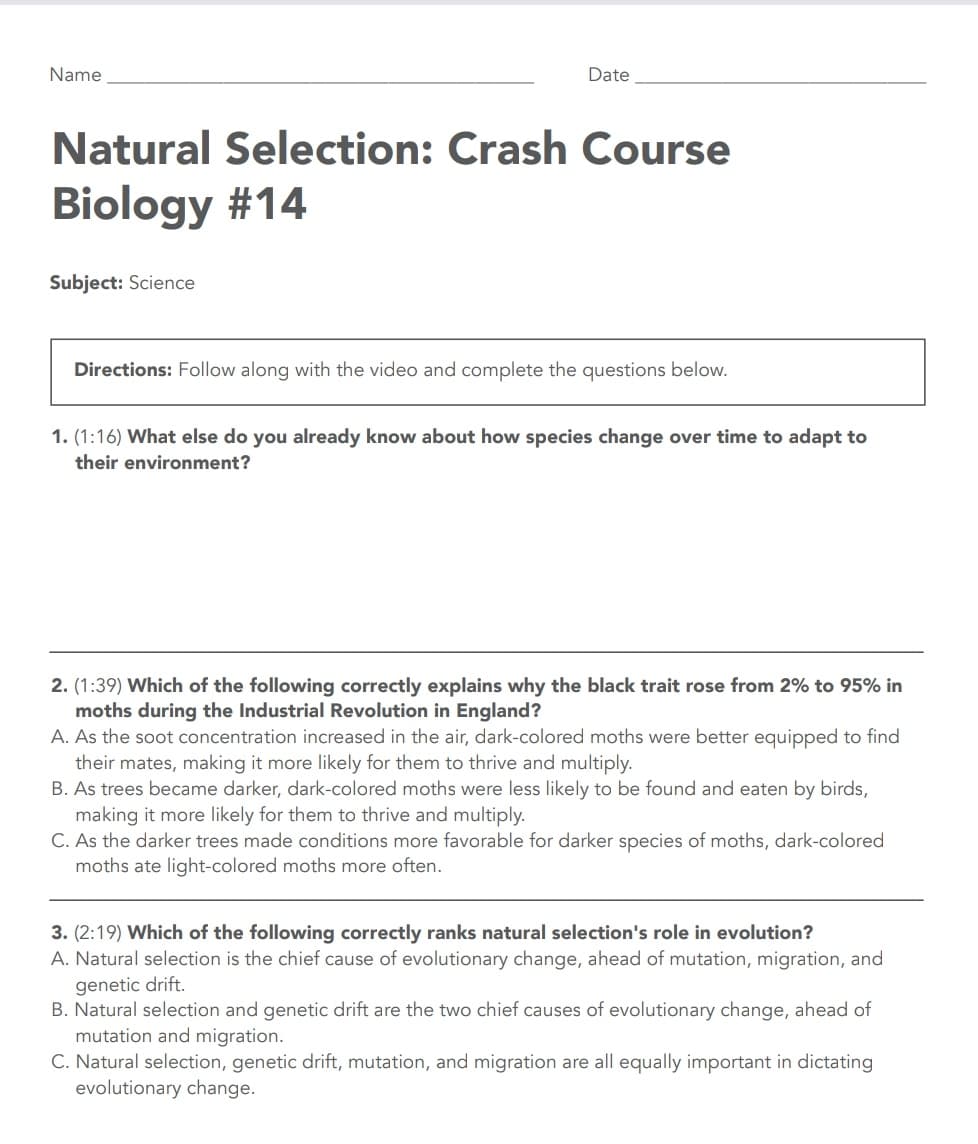Chapter2: Aquatic Plants And Animals
Section: Chapter Questions
Problem 3KA
Related questions
Question

Transcribed Image Text:Name
Date
Natural Selection: Crash Course
Biology #14
Subject: Science
Directions: Follow along with the video and complete the questions below.
1. (1:16) What else do you already know about how species change over time to adapt to
their environment?
2. (1:39) Which of the following correctly explains why the black trait rose from 2% to 95% in
moths during the Industrial Revolution in England?
A. As the soot concentration increased in the air, dark-colored moths were better equipped to find
their mates, making it more likely for them to thrive and multiply.
B. As trees became darker, dark-colored moths were less likely to be found and eaten by birds,
making it more likely for them to thrive and multiply.
C. As the darker trees made conditions more favorable for darker species of moths, dark-colored
moths ate light-colored moths more often.
3. (2:19) Which of the following correctly ranks natural selection's role in evolution?
A. Natural selection is the chief cause of evolutionary change, ahead of mutation, migration, and
genetic drift.
B. Natural selection and genetic drift are the two chief causes of evolutionary change, ahead of
mutation and migration.
C. Natural selection, genetic drift, mutation, and migration are all equally important in dictating
evolutionary change.
Expert Solution
This question has been solved!
Explore an expertly crafted, step-by-step solution for a thorough understanding of key concepts.
This is a popular solution!
Trending now
This is a popular solution!
Step by step
Solved in 2 steps

Knowledge Booster
Learn more about
Need a deep-dive on the concept behind this application? Look no further. Learn more about this topic, biology and related others by exploring similar questions and additional content below.Recommended textbooks for you


Biology: The Unity and Diversity of Life (MindTap…
Biology
ISBN:
9781337408332
Author:
Cecie Starr, Ralph Taggart, Christine Evers, Lisa Starr
Publisher:
Cengage Learning


Biology: The Unity and Diversity of Life (MindTap…
Biology
ISBN:
9781337408332
Author:
Cecie Starr, Ralph Taggart, Christine Evers, Lisa Starr
Publisher:
Cengage Learning